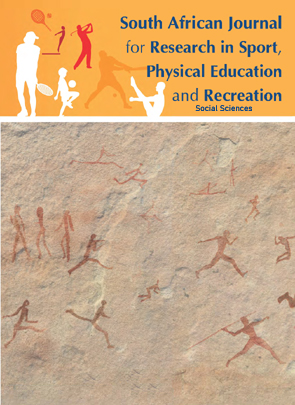Hematologic responses following concurrent taekwondo and resistance training
Main Article Content
Abstract
The aim was to investigate the effects of two short-term concurrent taekwondo (TKD) and resistance training (RT) programmes of differing intensity on hematological parameters in TKD athletes. Two experimental groups exercised five times weekly, namely a high-intensity concurrent training group (HiCon; n=14) and moderate-intensity concurrent training group (ModCon; n=14). The ModCon performed TKD training at 55-70% (weeks 1-2) and 70-85% (weeks 3-4) maximum heart rate (HRmax) and RT training for four sets of 10-15 repetitions for the 13 whole-body RT exercises. The HiCon performed TKD training at 85-100% (weeks 1-2) and 95-100% (weeks 3-4) HRmax and RT training for five sets of 10-15 repetitions for the 13 whole-body RT exercises. At post-test, the male HiCon demonstrated significantly (p<0.05) higher levels of red blood cells, haemoglobin and haematocrit, while the male ModCon demonstrated significantly lower monocytes and basophil levels. The female HiCon significantly increased their eosinophils, while the female ModCon significantly increased their haemoglobin and mean corpuscular volume, and decreased their red distribution width levels. This suggests that both high-intensity and moderate-intensity concurrent TKD and RT can improve selected hematological parameters, thus oxygen-carrying capacity and immune function, in even already TKD-trained athletes.

